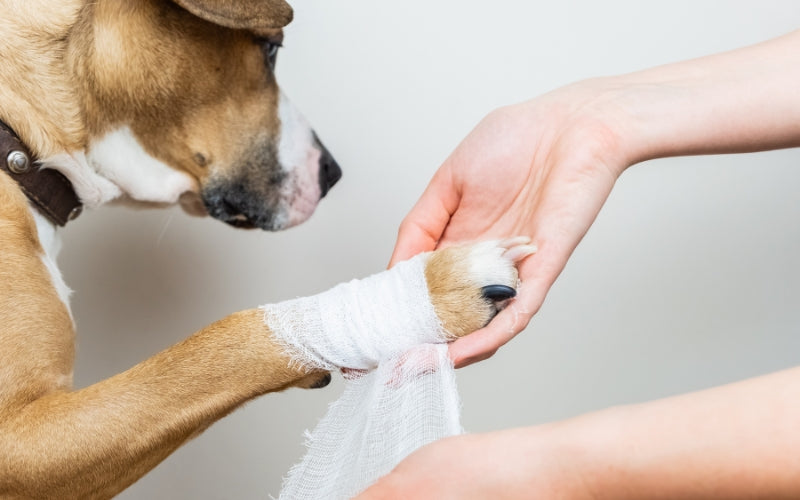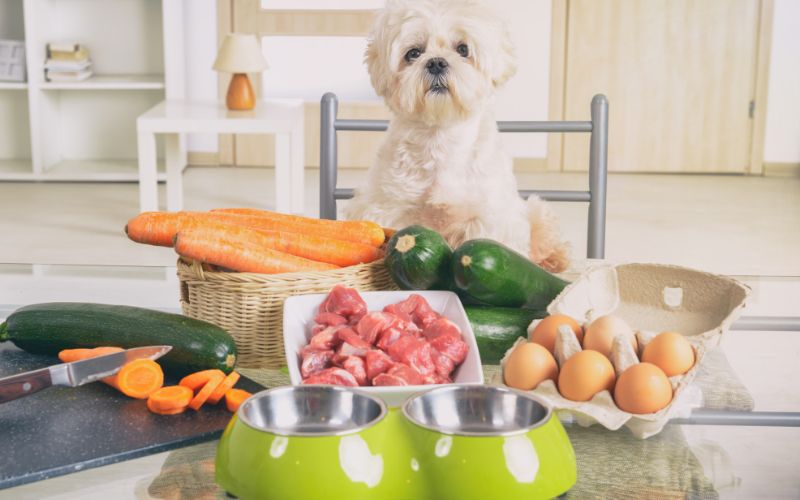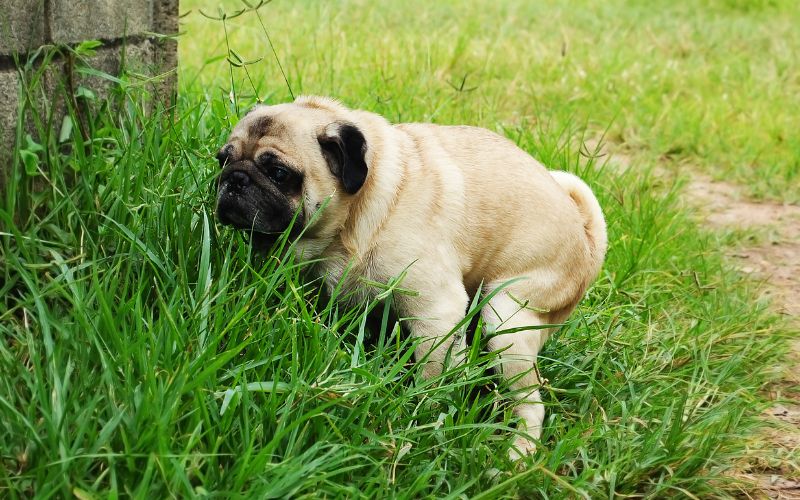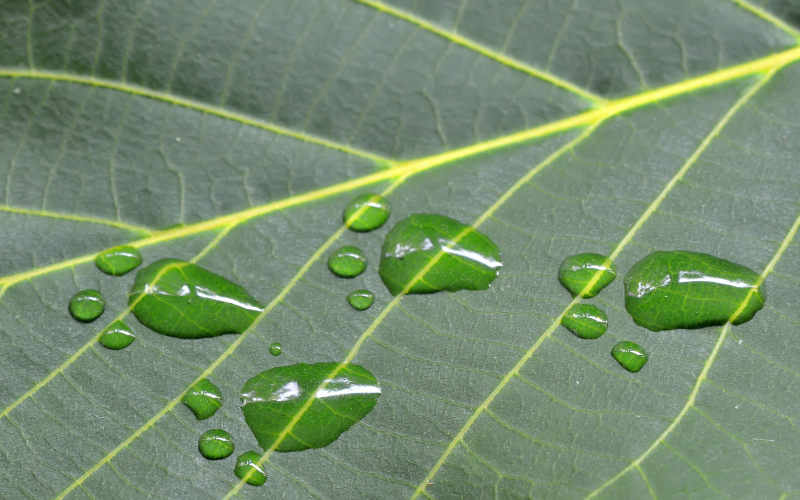Acting promptly when your dog has a medical episode or accident could be the difference between life or death.
However, a recent survey discovered that only 2% of pet owners had taken a pet first aid course, while only 10% owned a pet first aid kit.
That’s why we have collated the first aid tips you need to know to keep your dog safe and healthy.
Read on to learn what to do if your dog chokes on a bone or ingests a toxin, what to do if your dog is bitten by a snake, how to treat wounds and what to do in the event of a seizure.
Any dog owner knows that accidents can easily happen and an otherwise healthy dog can get sick at the drop of a hat. Whether that’s in the home environment or while venturing outdoors.
Dogs are natural explorers and don’t sense danger in the same way that humans do. They live in the moment and will often head straight towards danger, rather than taking a moment to think, show caution and retreat.
From choking on a bone at dinner time to an encounter with a venomous snake or sudden seizure, it’s vital that you are prepared in these situations and know what to do.

What to do if your dog is bitten by a snake
In the event of a snake bite, it’s important to seek the help of a veterinarian as quickly as possible.
This gives your dog the best chance of recovery and survival. Call ahead, if possible, to ensure that your veterinarian is equipped to deal with an emergency snake bite patient.
If you catch a glimpse of the snake, make a note of its colour and markings, or take a photo if it’s safe to do so from a distance.
This will help with your veterinarian’s plan of action, so they can administer antivenom if the snake is identified as venomous.
However, for your own safety, never attempt to approach, catch or kill the snake.
If the bite is in an obvious location, use a pressure immobilisation bandage on the area to prevent the venom from spreading.
It’s also important to keep your dog calm and still, as this will also limit the toxins from circulating around the body.
It’s estimated that 6,200 dogs are bitten by snakes every year across Australia, with 84% occurring during the six warmer months of the year and 78% taking place in rural areas.
Overall, 87-88% of dogs survive, but the key to recovery is the amount of time that passes between the bite and presenting to the veterinary hospital.
What to do if your dog has a seizure
Witnessing a canine seizure can be traumatic and scary, but remaining calm and collected is important.
Symptoms can include:
- Collapsing
- Jerking movements
- Stiffening
- Twitching and foaming at the mouth
Dogs may also urinate, defecate or drool.
Firstly, during a seizure, never attempt to restrain your dog or place your hand or any object anywhere near its mouth. This may lead to choking or an accidental bite.
Simply move any furniture or dangerous objects out of the way to avoid injury, keep lighting low and noise to a minimum while you monitor your canine companion closely. Any kind of stimulation can prolong the seizure or make it worse.
A typical seizure will only last for a couple of minutes, but it’s important to keep your dog calm afterwards as they may be disorientated for a couple of hours.
Lastly, seek the advice of a veterinarian. This is especially vital if the seizure continues for longer than five minutes or if several occur rapidly.

What to do if your dog chokes
When it comes to food or a juicy bone, it’s common for a dog to get over excited and wolf down their meal or treat at speed. However, in this scenario, choking can very easily occur.
This is why monitoring your dog while they eat or gnaw on a bone is especially important. If choking occurs, you will need to act very quickly to ensure your dog’s chances of survival.
Firstly, if your dog is choking, you may notice the following signs:
- Distress
- Drooling
- Pawing at the mouth or head
- Choking/coughing sounds
- Retching
- Blue-coloured skin and/or mucous membranes
But would you know what to do from here, to save your canine companion’s life?
The first step is checking your dog’s mouth to see if anything is trapped or lodged inside. However, remember that your dog may be scared so their behaviour could be unpredictable.
If you can see an object stuck inside, try to gently remove it. This may solve the problem and help your dog to breathe again.
If you can’t see an object or are unable to dislodge it, the next step is the Heimlich Maneuver.
Performing the Heimlich Maneuver
This can be performed by implementing the following steps:
For a small dog
- Hold your dog upside down by its thighs and shake gently three or four times to dislodge the object. If this doesn’t work, proceed to the steps below
For dogs of all sizes
- Stand behind your dog or lift them up so their back is against your chest
- Wrap your arms around them, directly under the ribs
- Make a fist with one hand and cup the other around your clenched fist
- Perform five quick thrusts by thrusting your fist into the belly and up toward the ribs
Repeat this entire process until the object is dislodged, and remember to check regularly to see if the object has moved and is able to be dislodged manually.
If this doesn’t work and there is no pulse or the heart stops, you may consider CPR.
(Here’s a handy video on performing a Heimlich on a dog.)
What to do if your dog ingests a toxic substance
Dogs are inquisitive by nature, which means they can sometimes eat things they are not supposed to. Whether that’s a toxic food, plant, medication or chemical.
But how do you know if your dog has consumed a toxic substance? After all, it’s hard to monitor them 24 hours a day.
Apart from the obvious signs, such as a chewed plant or missing food, there are many clinical signs to look out for if you suspect your dog has been poisoned.
The most common signs of poisoning include:
- Vomiting
- Diarrhoea
- Loss of appetite
- Lethargy and seizures
This can progress to liver failure, kidney failure and heart problems in severe cases.
If you suspect poisoning, always contact your vet immediately. This will ensure your dog receives prompt care and increases their chance of recovery.
If you’re wondering what dogs can and can’t eat, our free eBook contains a handy list of foods you should avoid, alongside plenty of healthy foods your dog can safely enjoy.

What to do if your dog has a bleeding cut or wound
If your dog has a bleeding cut or wound, it’s important to carefully assess the situation to see if intervention is required.
All but the most minor cuts and wounds should be tended to by a veterinarian, in order to avoid infection, blood loss or tissue damage.
If the wound is mild and the bleeding is minor, firstly apply pressure to the cut or wound using a clean towel or gauze. This will help to stop any bleeding. However, remember that your dog may be scared or in pain, so could act unpredictably.
The next step is to gently clean the wound using warm tap water, warm saline solution or any other cleansing solution recommended by your vet.
You can create saline solution at home by combining one level teaspoon of salt (or Epsom salts) with two cups of water. However, do not use any other cleansers unless instructed to do so.
While cleaning, be on the lookout for any foreign objects or debris, but only remove if it’s safe and easy to do so.
It is important that your dog doesn’t lick the injured area excessively, as this can increase the chance of an infection. In this case, an Elizabethan collar or bandage may help.
Be sure to monitor the wound carefully over the coming days and clean on a regular basis. If the wound gets bigger, looks inflamed/red or starts to develop discharge, seek prompt medical advice.
In Conclusion
Just like humans, dogs often experience illness, accidents or injuries. So it’s important to be prepared for when such situations arise. After all, a healthy dog is a priority for any responsible dog parent.
Ensure you have a fully stocked pet first aid kit on hand and brush up on your first aid skills, so you are ready to take action if required.
You may even consider a dog first aid course to increase your knowledge and confidence. The Australian Red Cross runs a veterinary-approved pet first aid course, which can be completed online in 60 minutes.
Remember, in the event of an emergency, or if you’re unsure about your dog’s condition, contact your veterinarian or nearest emergency animal hospital for assistance.
